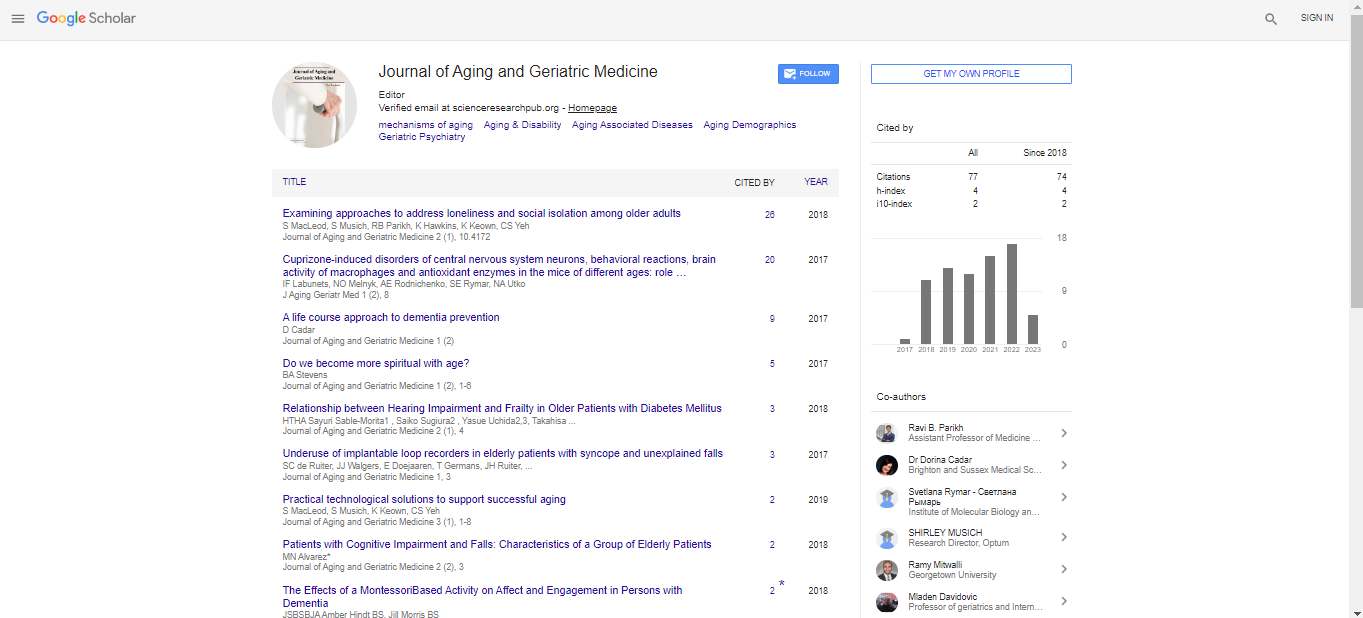Commentary, Agm Vol: 5 Issue: 8
A Neurological Examination is the Assessment of Sensory Neuron and Motor Responses, Especially Reflexes, to Determine Whether the Nervous System is Impaired
Department of Biological Sciences, Birla Institute of Technology & Science, Pilani, India
*Corresponding author: Ashish Runthala, Department of Biological Sciences, Birla Institute of Technology & Science, Pilani, India; Email: ashishr@bitspilani.ac.in
Received date: Aug 06, 2021; Accepted date: Aug 23, 2021; Published date: Aug 30, 2021
Abstract
A neurological assessment is the appraisal of tactile neuron and engine reactions, particularly reflexes, to decide if the sensory system is disabled. This regularly incorporates an actual assessment and an audit of the patient's clinical history, yet not more profound examination, for example, neuroimaging. It tends to be utilized both as a screening apparatus and as an insightful instrument, the previous of which while looking at the patient when there is no normal neurological shortfall and the last of which while inspecting a patient where you do hope to discover abnormalities.
Keywords: Nervous System
A neurological assessment is the appraisal of tactile neuron and engine reactions, particularly reflexes, to decide if the sensory system is disabled. This regularly incorporates an actual assessment and an audit of the patient's clinical history, yet not more profound examination, for example, neuroimaging. It tends to be utilized both as a screening apparatus and as an insightful instrument, the previous of which while looking at the patient when there is no normal neurological shortfall and the last of which while inspecting a patient where you do hope to discover abnormalities. If an issue is found either in an analytical or screening measure, then, at that point further tests can be completed to zero in on a specific part of the sensory system. By and large, a neurological assessment is centered on seeing if there are sores in the focal and fringe sensory systems or there is another diffuse cycle that is alarming the patient. Once the patient has been completely tried, it is then the job of the doctor to decide if these discoveries consolidate to shape an unmistakable clinical condition or neurological issue like Parkinson's illness or engine neuron disease. Finally, it is the job of the doctor to discover the reason for why such an issue has happened, for instance discovering whether the issue is because of aggravation or is inborn. Handedness is significant in building up the space of the mind significant for language as practically good gave individuals have a left half of the globe, which is liable for language. As patients answer questions, acquire a thought of the grumbling altogether and comprehend its time course. Understanding the patient's neurological state at the hour of addressing is significant, and a thought of how skillful the patient is with different undertakings and his/her degree of disability in doing these errands ought to be gotten. The timespan objection is significant as it can assist with supporting the finding. For instance, vascular problems like strokes happen as often as possible over minutes or hours, while persistent issues like Alzheimer's infection happen over merely years. Completing a 'general' assessment is similarly just about as significant as the neurological test, as it might prompt hints to the reason for the protest. This is displayed by instances of cerebral metastases where the underlying grievance was of a mass in the bosom. The aftereffects of the assessment are taken together to anatomically distinguish the injury. This might be diffuse or exceptionally explicit. General principles include: Looking for side to side balance: one side of the body fills in as a control for the other. Deciding whether there is central asymmetry. Determining whether the interaction includes the Fringe Sensory System (FSS), Focal Sensory System (FSS), or both. Considering if the finding can be clarified by a solitary injury or regardless of whether it requires a multifocal process. Establishing the store’s area. On the off chance that the interaction includes the CNS, explaining in case it is cortical, subcortical, or multifocal. On the off chance that subcortical, explaining whether it is white matter, basal ganglia, brainstem, or spinal line. Assuming the interaction includes the PNS, deciding if it limits to the nerve root, plexus, fringe nerve, neuromuscular intersection, muscle or regardless of whether it is multifocal. A differential analysis may then be developed that considers the patient's experience e.g., past malignant growth, immune system diathesis and present discoveries to incorporate the most probable causes. Assessments are pointed toward precluding the most clinically huge causes regardless of whether moderately uncommon, e.g., mind tumor in a patient with unobtrusive word-discovering anomalies however no expanded intracranial pressing factor and controlling in the most probable causes.
 Spanish
Spanish  Chinese
Chinese  Russian
Russian  German
German  French
French  Japanese
Japanese  Portuguese
Portuguese  Hindi
Hindi 